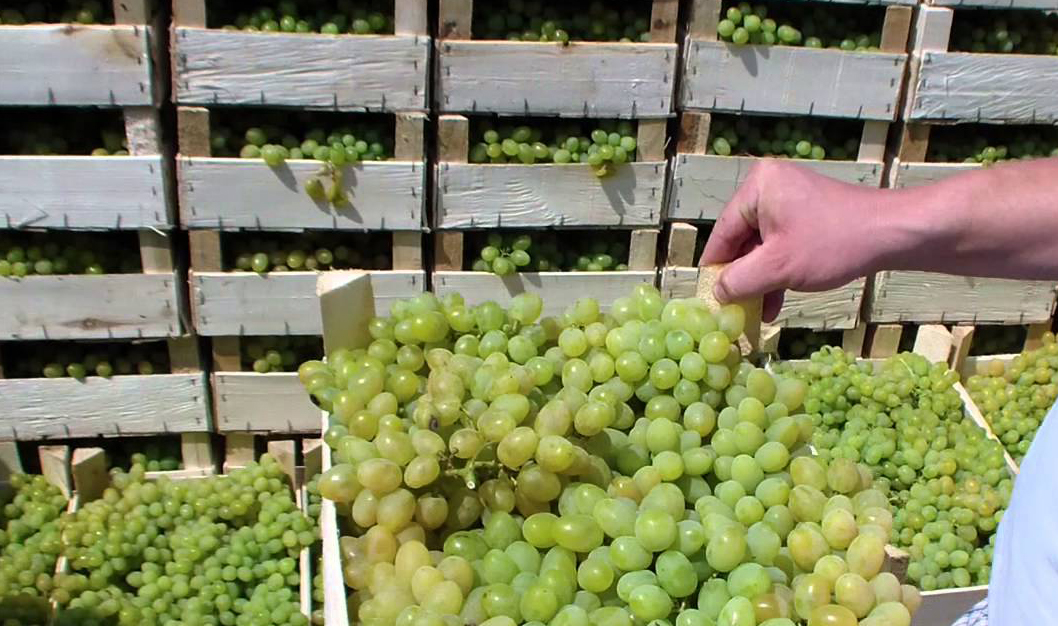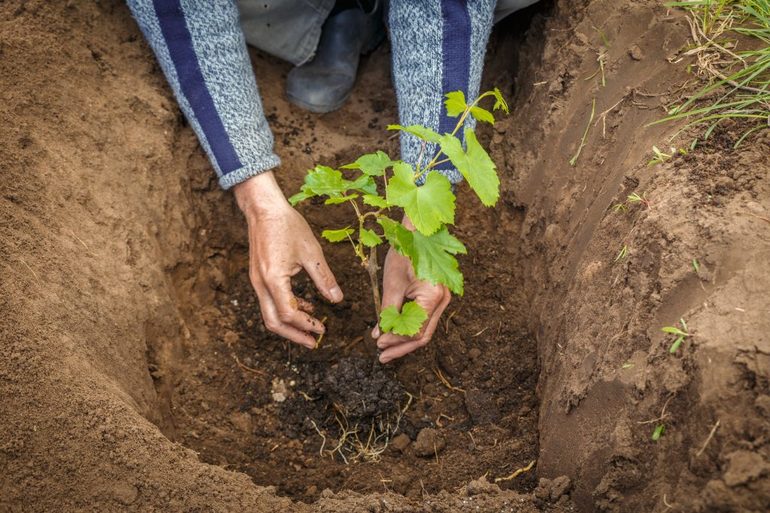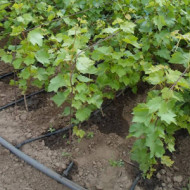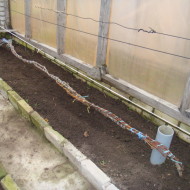Secrets of growing high-yielding Augustine grapes
Content
Cultivation history and other variety names
The first fact from the detailed description of the Augustine variety is the mention of variants of the names. The qualities of this bush can be judged by its second name - Phenomenon. In professional circles, the grapes are often called Pleven Sustainable, and among the narrow circle of initiates - V25 / 20.
The variety was bred in the Bulgarian town of Pleven. The selection base was the Bulgarian Pleven and the French grapes Villars Blanc. From the "parents" the plant inherited an early ripening period, excellent commercial characteristics of berries, productivity, immunity to diseases and resistance to pests.

Varietal traits and characteristics
Augustine, unpretentious in care and growing conditions, gives a generous and regular harvest. That is why it is popular among winegrowers, who call it a "workhorse" capable of stretching out the entire berry season.
Description of the bush and vine
Augustine is a lush shrub with vigorous vines of deep red-black or terracotta color with a pattern of small black freckles. It is the peculiarities of the vine that make it possible to use the shrub not only for harvesting, but also as a detail of landscape design - to decorate walls, pergolas and arches.
The foliage is quite large, the average diameter is about 17 cm. On fertile soils, it can be more. The leaf plate is poorly pubescent, slightly wrinkled, with a weak dissection. The marginal leaf teeth are large and straight.
The flowers are bisexual, self-pollinating. Due to this feature, Augustine is often used as a pollinator for self-fertile bushes.
Description of bunches and berries
A bunch of grapes is large, cone-like, up to 27 cm long, weighing on average about 600 g. Under favorable climatic conditions and proper timely care, the weight of one bunch can reach 1 kg. A bunch of medium density, there are small gaps between the berries.
Berries are medium in size, 3-4 cm long, weight - from 5 to 10 g. The size can vary from small to larger, depending on growing conditions. Fruits are oval, one-dimensional, with large seeds. Skin color can range from green-white to honey-colored, with a slight pink dusting. The structure of the skin is strong, but tender, not felt when eaten.
The pulp with a dense fleshy structure resembles marmalade in consistency, therefore it separates well and does not leak out with juice. The bunches do not ripen at the same time, they are cut off selectively, so as not to leave the berries wither in the sun for a long time.
Ripening and fruiting dates
Augustine belongs to the early ripening varieties: it takes about 3 months from the beginning of flowering to ripening of the fruit. In the southern regions, the ripening period can be reduced by 20 days. Begins to bear fruit in the second year after planting. When propagated by cuttings and proper agricultural technology, it can bear fruit for up to 50 years.
Yield
Fruiting grapes consistently and annually. The yield is high regardless of the weather conditions. Industrial cultivation - an average of 130 kg / ha, household - up to 60 kg per bush.

Taste and use of berries
The berries ripen at the same time and do not crumble, they can stay on the bunch for up to 14 days and do not crumble. The fruits have a sweet, but not sugary taste, and the sweetness itself has several shades. The refreshing sweetness has a soft, unobtrusive northern character. The aroma is subtle, unobtrusive.
Despite the low percentage of sugar for grapes (21%), Augustine is mainly consumed fresh.
Video "Description of the grapes Augustine"
This video presents some of the varietal characteristics of the crop.
Pros and cons of Augustine
Augustine is one of those grape varieties in which almost all flaws depend on errors in care. These include shedding berries, if the harvest is not harvested for more than 2 weeks, cracking and damage to the fruit with excessive moisture. An objective disadvantage, which depends on the characteristics of the variety, is the presence of large seeds.
But the dignity of the variety is beyond doubt:
- cold resistance, good immunity to fungal infections and wasp attacks;
- excellent technical and taste characteristics of fruits: excellent appearance and taste of berries, transportability over long distances, ripe fruits do not crumble during harvesting and remain on the bunch for up to two weeks;
- stable and generous fruiting;
- the possibility of using for decorative purposes.
General rules for planting and growing
The key to the successful cultivation of any plant depends on the strict implementation of the planting rules and timely agrotechnical measures.
Soil and lighting requirements
Despite Augustine's unpretentiousness to growing conditions, fertile moist soil is optimal for grapes. The site should be as open as possible, but protected from gusts of strong winds and drafts.
Lighting is one of the main conditions for the normal development and fruiting of the bush. Therefore, it is necessary to choose well-lit areas, without shading. In shaded areas, the bush develops poorly, peas and slow ripening of berries can be observed.

Reproduction methods
You can plant grapes both in spring and autumn. The most popular way is to plant seedlings. But you can propagate the bush both by cuttings and with the help of layering. For grafting, a part of a healthy two-year-old strong vine with several buds is used as a scion. For layering, you need to choose a vine from the lower tiers, flexible and long. It is recommended to separate the layers only after their own leaves and roots appear in the pinching places.
The planting pit must be at least 0.8 m deep. After planting, you need to moisten the bush well, but you should not be zealous with feeding, a small amount of superphosphate and potassium salt is enough.

Watering and fertilizing
In the first year, the bush is not fed, only in the fall you can add a little humus at the base. He will insulate the plant for the winter, and fertilize it in the spring.In the following years, feeding is carried out three times: in the spring, nitrogen-containing fertilizers are applied, before flowering - superphosphate, and during the ripening period of berries - a potassium-phosphorus complex. Natural rainfall is usually sufficient for grapes. But in arid regions, the bush needs regular moisture.
The need for pruning
If you do not take care of the timely pruning of the bush, then you can get an abundant amount of green mass and shoots and a scanty harvest. Therefore, starting from the second year, you need to prune the vine in the fall, keeping from 6 to 10 eyes. And in the summer to pinch the stepsons. It is better to remove the stepchildren of the second order completely.
Features of preparation for winter
Under the condition of a cold frosty winter, it is imperative to take care of the shelter of the bush. The vine is tilted to the ground and covered with straw, spruce branches, or a special covering material is used - spunbond. The main requirement is that the plant should not sweat and steam under cover.
- Drip irrigation
- Autumn pruning
- Preparing for winter
Pest and disease control methods
Wasps are not afraid of Augustine, but the appearance of the grape-screw must be closely monitored. Otherwise, it will thoroughly spoil the harvest. For processing, bioinsecticides can be used, which will protect against the pest and will not damage the fruit.
Augustine has excellent immunity to fungal infections. But some growers still treat the bushes in the spring with a solution of sulfur.
Winegrowers reviews
“I saw Augustine on the arch of the neighbors and fell in love. And after tasting the berries, there was no doubt at all. A wonderful decoration for the gazebo and table. "
“I was tempted in Augustine by the fact that he is not capricious in his care, but at the same time he gives a generous harvest every year. Whether the berries are suitable for preservation - I don't know, we usually eat it fresh. "
Augustine is one of the best options not only for those who like to decorate the site with greenery, but also for those who grow grapes for sale. A generous harvest in any weather is an indisputable plus that deserves any care.



